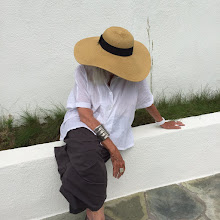That Which Is: Marcia Lippman
Outside
of New York, it becomes easier (read: less costly) for artists and dealers to
take real chances. A case in point was the exhibition of mostly small
photographic objects with large ambitions organized by the photographer Marcia
Lippman at KMR Arts in
Washington Depot, Connecticut. Lippman is known for her neo-pictorialist
aesthetic, an alignment that puts her closer to Clarence White than to Jeff
Wall. In this show she went all in to define her position vis a vis
contemporary photography. She hung her own work salon style in groupings
of photos from her collection of vernacular and historic images. She
called these 55 groups cantos, suggesting that each was a verse of a larger
poem. More like an epic of battle. With everything from tintypes and
embroidered images to French postcards, the show celebrated the many formats
that once populated the photographic landscape, but it also offered an in-your-face
response to the dominance of large-format color photography and the crushing
institutional sameness it has brought to the medium. It’s a sameness that
many younger photographers are slowly but surely rebelling against, on the one
hand through Instagram and on the other through deliberately vernacular
postures. The artist’s own images were anything but casual. Rather they
were a deeply personal gathering of old and new photographs shot in locations
from Italy to Argentina. Clearly the preoccupation here was the classic one of
reminiscence, of memory as a complex of impressions and associations, but
constantly revised, never static. Lippman’s “museum” was as dynamic and
open-ended as deck of tarot cards –ideal for plumbing the soul and reading the
future.
Lyle Rexer
photograph,
september/october 2013






















